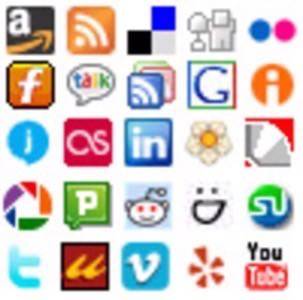Sometimes it’s just hard to keep up. In this technology-focused niche we all live in there are new applications, new initiatives, and new platforms that spring up every day, not to mention constantly breaking news that fills our RSS readers. Take a day off and you’re behind. Take an hour off and you just missed 300 more blog posts. In addition to the everyday struggles of information overload the average computer user deals with – like the overflowing inbox, for example – those in the internet/new media/technology space aren’t just overwhelmed with new content, but also with new applications and choices to manage that content. What’s a web-app loving person to do?

Drowning in Awesomeness
The double-edged sword that comes with keeping abreast of all the latest developments in technology means that we’re always aware of the latest and greatest applications and services to try…but it also means that we’ve tried all of them. Unlike the average user, who doesn’t even bother creating a Facebook profile until several of their friends cajole them into doing so, technology early adopters are the first to sign up and create profiles on every service that launches.
Sometimes these services have value; if so, they trickle down to the rest of the world over time. For example, social networks like MySpace and Facebook changed the way people interacted online. Flickr made photo sharing fun, easy, and social. YouTube let everyone be a star. However, sometimes they’re not so great after all, and they end up fading away into nothingness in that area we’ve affectionately dubbed the “deadpool.”

These failures don’t seem to dampen our enthusiasm for trying the “next big thing,” though. Every day, the web is filled with posts about this new app or that great service. When you think about it, it’s really rather impressive that there are that many of them out there – enough to be written about in a seemingly nonstop fashion.
For technology enthusiasts, it’s not enough to just “try” the new apps and services though. If they’re the next big thing (or so everyone says), we’re supposed to jump on board and use them, use them, use them. Scoble even recently threatened to expose some of the so-called “A-Listers” for not being active enough, saying:
“I thought about embarrassing most of the A listers on FriendFeed, because very few of them actually read that many blogs (I can tell, they rarely comment on, or link to, or FriendFeed with other people’s blogs)”
Right….because if they’re not on FriendFeed, they’re phonies, huh?
So, no. Commentary is not enough. We’re supposed to live, breathe, eat, sleep, and dream this stuff. The problem is, while we’re busy experimenting with this new thing and that new thing, we might miss out on actually enjoying the services that are already there for us, working just fine, thank you very much.
Too Many Choices
However, there are certain areas we’ve noticed that seem to be the biggest sources of conflict as of late. In these areas, several companies are clamoring to be the winner of the space, releasing duplicate or similar products, constantly adding new features, and generally trying to one-up their competitors in an effort to come out on top. When there are several companies doing the same thing, it gets confusing for the average user and time-consuming for the early adopters who play with everything. In the end, the hope is that one great service would come out on top, but that’s hardly ever the case. We’re already on MySpace, Bebo, Facebook, and LinkedIn because there’s no one winner for social networks…are we going to have to use all these newcomers battling it out, too?
The Battle to Be Open
We never thought we would see the day that the big companies were actually fighting to see who can be the most open of the bunch, but that seems to be exactly what’s taking place now in the battle of the social graph APIs. You’ve got Google’s Friend Connect service vs. Facebook’s Connect service vs. MySpace’s Data Availability, each announced within days of each other. Instead of making it easy for users to understand what it means to be maximizing a social graph, the companies have just flooded the feeds with their separate announcements. As Marshall reported on Monday, the reason, at least according to Google is that “the beauty of open standards is that companies don’t have to talk. They can just meet up around interoperable technologies.” We would like to think that this battle for openness will lead to easier-to-use social networks as our friend graphs will get to follow us around, but something about the timing of these separate announcements smells like a battle brewing.

The Battle of the Lifestreams
There’s MyBlogLog’s lifestream, FriendFeed, Lifestream.fm and even Facebook’s attempt at lifestreaming, which involves integrating a handful of services into users’ Mini-Feeds and News Feeds. Too much? You betcha. Although FriendFeed is getting buzz, even it doesn’t offer a way to really filter the info it displays. Sure, the “filter by service” Greasemonkey script can help narrow down content and the Friends & Groups script can help sort your friends into groups of your own choosing, but we shouldn’t have to rely on a Firefox add-on to make our apps work for us. And while FriendFeed may be one service (besides Twitter, of course) that internet addicts can’t live without, it still has a way to go to cross over to the mainstream user, especially if Facebook starts offering similar integration.

The Battle to Tweet on AIR
It seemed that every time our favorite Twitter AIR app Twhirl was updated, Alert Thingy followed suit and vice versa. Both struggled to integrate FriendFeed into their stream while still providing the best Twitter-on-the-desktop experience, and neither really accomplished that. Alert Thingy integrated FriendFeed updates into its stream in one window while Twhirl went with a second window just for FriendFeed. Neither was a perfect solution. Alert Thingy lacks the Twitter-specific features of Twhirl and Twhirl’s two windows isn’t ideal for users concerned with desktop real estate, like laptop users. What’s worse is that in addition to Twhirl/Alert Thingy battle, we also had to contend with other also-rans which included both Twitter, FriendFeed, and combo apps like Snitter, Spaz, Feedalizr, bTT, and MySocial’s browser sidebarand AIR app.

The Battle to Filter Your RSS
It’s not just RSSmeme vs. ReadBurner – although that’s an obvious pairing. Both of those sites feature top shared items from Google Reader. RSSmeme recently launched an API, which means it now offers filtering, albeit the geeky sort involving the creation of custom URLs. ReadBurner, not to be outdone, announced NetVibes support shortly thereafter. However, Google saw that other services were springing up around their RSS reader, so in an effort to keep people in “Googleland” they added friends to your reader to allow for a more personalized filtering experience. Those friends can also now share items with notes, so you don’t even need to go elsewhere to comment on the items in the feeds.

Unfortunately, the downside to the friends feature means that in addition to those feeds that you now subscribe to, you’re also reading suggestions from friends. Not that they’re not great and everything, but is it really so hard for Google Reader to go ahead and mark it as read in your feed list if your friend’s shared item is from a blog whose feed you already subscribe to? Apparently it is. Which means if it’s really good news, we’ll read it twice. Or even three times if someone else shares it later on. There might be a light at the end of the tunnel when it comes to filtering Google Reader via AideRSS, but ranking by popularity is really only one way to find the best content. There’s something to be said for the hidden gems that get overlooked, too.

But the battle of RSS filtering doesn’t end with Google Reader either. Perhaps not as apparent, but both Twitter and FriendFeed are slowly becoming people’s preferred method of getting news. Why read through hundreds of unread, unranked items just to stay on top of the news? If it’s any good, you’ll hear it on Twitter or see it shared on FriendFeed. Some users are even positioning themselves as “human information filters,” on these services, something our newest ReadWriteWeb contributor, Corvida, discussed not to long ago on her personal site. These highly active users (yes Scoble and Louis come to mind) are good friends to have on the service since they’ll constantly be posting and filtering the best stuff for you.

Then there are the other memetrackers that exist to highlight the top stories of the day, too: Techmeme is at the top of the list, of course, but there are also newcomers/up-and-commers like LinkRiver, Techsted, SocialMedian, and community builder BlogRize. I’m just scratching the surface here and that’s already ten different ways to filter the news.

The Battle of the Mobile Social Networks
This one will really surprise those not following the mobile networking space closely. When researching mobile network up-and-comer Brightkite, I stumbled upon a slew of mobile networks already competing in the space.

There’s MocoSpace, Friendstribe, Hobnobster, Dodgeball, Zyb, mig33, Mobiluck, MeetMoi, JuiceCaster, Loopnote, Rabble, Wadja, Treemo, groovr, flagr, Lime Juice, Loopt, and Next2Friends, to name just a few. There are, in fact, many, many more. Some focus on texting, some on sharing images, others on geo-tagging, and others on traditional social networking. They’re all acting like the mobile web is the wild west and if they can just get there first they might have a shot at winning.
However, who wants to bet that the mobile networks everyone ends up using are the ones who aren’t pretending that the mobile web is some different web altogether? Even more likely winners are the mobile versions of MySpace and Facebook, where all your friends already exist.
The Battle of the Social News Sites
Of course there’s Digg. But Digg is opening up the space for competition once again now that they’re focused on going mainstream and featuring less technology news. Mixx seems to be doing well as a small, friendly tech social news site, but they’re not the only one looking to catch the Digg overflow. There’s also Yahoo Buzz, Propeller, Reddit, Digg-for-girls Kirtsy (formerly Sk*rt), Sphinn, roll-your-own Digg tool Pligg, please-don’t-link to us Hacker News, and “if-we-ran-Digg” clone Sift’d. While all these sites are great for getting a post noticed by a wider audience, they’re also multiplying the numbers of places you can read the exact same story you read hours ago in Google Reader, saw tweeted on Twitter, shared in FriendFeed, promoted on Techmeme, etc.

What Can We Do?
It’s hard to say. Early adopters are not going to stop playing with every new service, but it’s clear that we’re getting to a point where tools that centralize, aggregate, but most importantly filter our content are going to be the ones that win out. There are only so many hours in the day, and, as it stands right now, every single one of them could be filled just consuming and interacting with content, social media, and web services. There’s also this little thing called “going outside” that we would like to take part in, too. Hopefully we’ll see the killer web app to filter the noise someday soon to help us do so, but it’s definitely not here yet.










